Colorado Peer Exchange: Planning and Environment Linkages (PEL)
Summary Report
View printer-friendly PDF
Date:
Host Agency:
Location:
April 3-4, 2019
Colorado Department of Transportation
Denver, Colorado
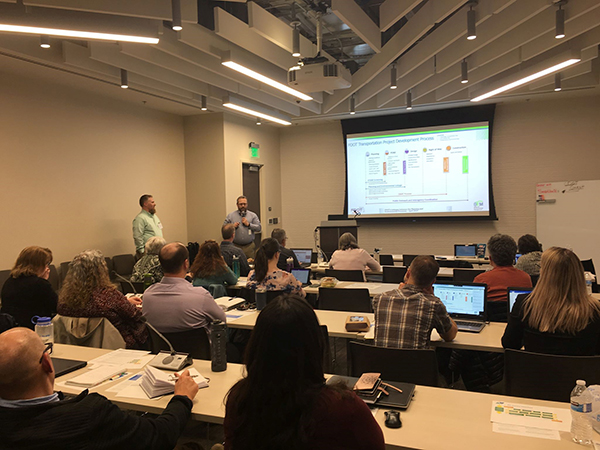
Photo Source: John A. Volpe National Transportation Systems Center
This report summarizes the April 3-4, 2019, Planning and Environment Linkages (PEL) peer exchange held in Denver, CO, sponsored by the Federal Highway Administration (FHWA) Office of Planning and the Office of Project Development and Environmental Review.
Table of Contents
Background
The following report summarizes a PEL peer exchange coordinated by the FHWA Office of Planning, Environment, and Realty held in Denver, Colorado, on April 3-4, 2019. The purpose of the event was to discuss approaches and effective practices for planning and environment linkages (PEL). PEL is a collaborative and integrated approach to transportation decision-making that 1) considers environmental, community, and economic goals early in the transportation planning process, and 2) uses the information, analyses, and products developed during planning to inform the environmental review process. PEL can help transportation agencies achieve efficient environmental review and permitting timelines, which is important to decision-makers and the public. Using PEL can create higher quality, more efficient, predictable, and integrated transportation planning and environmental review processes, and can ultimately accelerate project delivery. PEL uses transportation planning to inform the environmental review process required under the National Environmental Policy Act (NEPA).1
Introduction
The FHWA Colorado Division and the Colorado Department of Transportation (CDOT) hosted the event in coordination with FHWA Office of Planning, Office of Project Development and Environmental Review, and Resource Center for a PEL peer exchange in Denver, Colorado. Attendees hailed from across the nation including FHWA Division Office, State DOT, and Metropolitan Planning Organization (MPO) staff from North Carolina, Pennsylvania, Washington, and Florida. Participants from FHWA Headquarters and Georgia DOT also joined the conversation virtually via Google Hangout. The focus of the exchange was discussing each state PEL’s approaches, sharing best practices, and advancing PEL implementation.
This document summarizes the peer exchange. The agenda is available in Appendix A and a list of participants is available in Appendix B. Presentations referenced in this event summary are available upon request.
Peer Exchange Summary
Day 1: Information Exchange
Welcome
FHWA Colorado Division Administrator John Carter and Colorado DOT Environmental Policy and Biological Resources Section Manager David Singer opened the peer exchange by welcoming participants and discussing the importance of creating an efficient and collaborative process to expedite project delivery in Colorado.
FHWA HQ: PEL Overview
Tricia Sergeson from the FHWA Colorado Division Office delivered a presentation on what PEL is, how PEL can accelerate project delivery, background information on PEL, the benefits of PEL, and regulatory information on PEL approaches. PEL represents a collaborative and integrated approach to transportation decision-making that considers benefits and impacts of proposed transportation system improvements to the environment, community, and economy during the transportation planning process.
The statutory authority for PEL in 23 USC 139(f)(4)(E)2 provides requirements where the lead agency may eliminate from detailed consideration an alternative if it was previously studied in planning or an environmental review process carried out under State law. In general, PEL weaves considerations for planning and the environment throughout the transportation decision-making process, beginning with planning and continuing through project development, design, and construction (Figure 1).
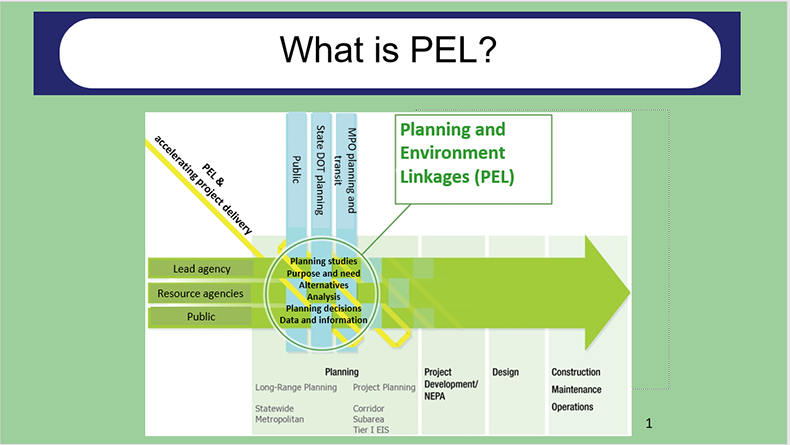
Figure 1: Planning and Environment Linkages Weave
PEL uses the information, analysis, or products developed during planning to inform the environmental review process, including the National Environmental Policy Act of 1969 (NEPA) process. Use of PEL is not required for project development; however, if it is used, PEL planning products (planning analysis and/or planning decisions), including development of purpose and need and elimination of unreasonable alternatives, may be adopted or incorporated by reference as long as these products meet NEPA requirements. Transportation planning activities undertaken as part of the planning process prior to the initiation of NEPA are eligible for Planning (PL) and State Planning and Research (SPR) funds, which is a major benefit of the PEL process. Additional benefits of PEL include reduced duplication, cost and time savings, enhanced community involvement, and improved relationships and coordination.
Many of the conditions for PEL are already completed as part of the normal transportation planning process. General considerations for early in the process, which may make it easier to meet the conditions for planning products to be carried forward into NEPA, include developing cooperative relationships, sharing publicly available information, having reliable data, developing and using reasonable methodologies, establishing sufficient documentation, and engaging FHWA Division or Federal Transit Administration (FTA) Region Offices.
Regulation and Legislation
PEL is referenced in both planning and environment statutes, regulations, and guidance. The Council on Environmental Quality (CEQ) 40 USC 1500.53 provides regulations on the process of implementing NEPA. The CEQ regulations include incorporating NEPA into early planning and the incorporation by reference of information that will “cut down on bulk.” 23 USC 168 and 23 USC 139(f)(4)(E),4 allow FHWA and FTA, as NEPA lead agencies, to use the results or decisions of State DOTs, MPOs, or public transportation operator-led corridor and subarea planning studies in the environmental review process under NEPA so long as these results meet NEPA requirements.
An optional statutory process for the integration of planning and environmental review was introduced in MAP-21 and amended by the FAST Act and codified in 23 USC 168. Adoption of planning products or incorporation by reference can occur under PEL if the 10 conditions set forth in 23 USC 168(d) are met. Elimination of an unreasonable alternative can occur as outlined in 23 USC 139(f)(4)(E)(ii) (see Appendix E). As long as conditions are met under either of these statutes, the ability to use planning products in NEPA is preserved throughout the environmental review process. Many of the conditions for PEL are completed during the normal transportation planning process. However, there are oversight responsibilities that field staff must ensure are adhered to for planning products to be viable for use in the environmental review process.
Alternatively, if a State is interested in incorporating PEL to their planning process, corridor and subarea studies as discussed in 23 CFR 450.212(a)-(c) and 23 CFR 450.318(a)-(d)5 can be used to produce a wide range of analyses or decisions for FHWA/FTA review, consideration, and possible adoption in the NEPA process for an individual transportation project.
It is important to note that planning activities are not considered a Federal action subject to review under NEPA. However, when planning products are used in NEPA, they may be subject to potential future litigation.
One Federal Decision
Executive Order 13807,6 Establishing Discipline and Accountability in the Environmental Review and Permitting Process for Infrastructure Projects, requires Federal agencies to process environmental reviews and authorization decisions for “major infrastructure projects” as One Federal Decision (OFD) and sets a government-wide goal of reducing, to two years, the average time for each agency to complete the required environmental reviews and authorization decisions for major infrastructure projects, as measured from the date of publication of a notice of intent to prepare an environmental impact statement. The benefits of PEL support the goals of Executive Order 13807, which emphasizes early and ongoing coordination, concurrent agency reviews with timely permitting and agency decisions, and issuing one federal decision document (the Record of Decision) to the maximum extent practicable. Figure 2 shows the PEL Coordination Chart for FHWA major infrastructure projects as outlined in the OFD Working Agreement. See the FHWA Environmental Toolkit website for additional information on OFD.
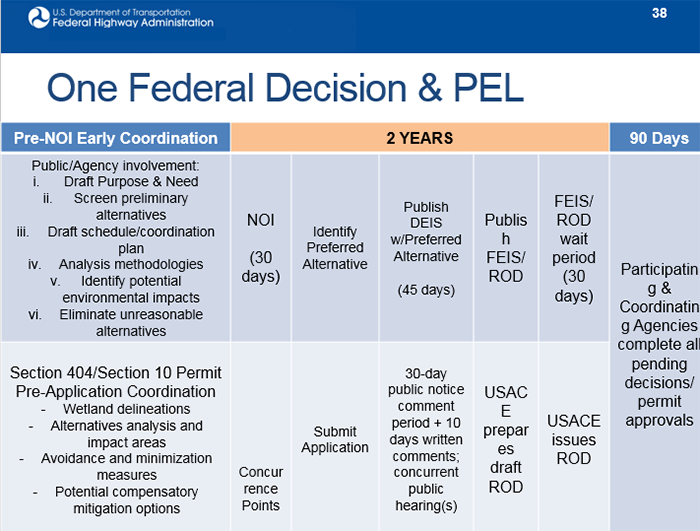
Figure 2: One Federal Decision & PEL Coordination Chart
Additional resources for PEL include Guidance on Using Corridor and Subarea Planning to Inform NEPA7, FHWA’s PEL Question and Answer8, and the Federal Aid Essential PEL Video.9 FHWA recommends documenting planning-level analysis that can be used to inform NEPA. The level of documentation needed depends on how the information will be used in NEPA. The most robust documentation must be provided where the goal is to make a decision in planning that will be accepted with no further analysis in NEPA. The Planning/Environmental Linkages Questionnaire10 can be used as a tool to support documentation efforts while conducting a corridor study or PEL study.
Colorado Overview of PEL Approaches
Overview
CDOT has conducted 20 PEL studies since 2008. CDOT leads a PEL program that primarily focuses on conducting larger-scale PEL studies. The PEL process represents an approach to transportation decision-making that considers environmental, community, and economic goals early in the planning stage and carries them through project development, design, and construction.
The PEL study creates a prioritized list of independent projects, establishes baseline data on environmental constraints, builds relationships with stakeholders, and identifies potential funding. Project decisions might include developing the purpose and need, recommending one or more refined alternatives to be evaluated in future NEPA processes, identifying stakeholders and issues of potential concern, prioritizing future projects, or developing key components for future analysis. Planning decisions may include determining what financial measures are needed (such as tolling) or what type of improvement, including modes, might meet transportation needs. The PEL process is often conducted before NEPA, before project construction funding is identified, and before problems are known or solutions have been considered. Before a PEL study is conducted, a pre-scoping process determines the reason for and expected outcomes of a PEL study, including why the study is being conducted and what question(s) will be addressed.
Colorado established the Transportation Environmental Resource Council (TERC)11 to discuss State transportation issues. The TERC consists of 18 members, including Federal agencies, State agencies, regional governments, MPOs, and other organizations. Because the TERC brings together all of these stakeholders, it serves as a key component for agency coordination and outreach in terms of planning for environmental stewardship and for supporting the PEL process. A Memorandum of Understanding (MOU) regarding PEL was signed with TERC agencies to promote coordination in the planning process.
Resource agencies can provide specific technical expertise and regulatory oversight on various environmental issues and potential project impacts. Resource agencies are typically contacted at two points in PEL studies: (1) to review existing conditions reports, and (2) to receive a copy of the final PEL document. CDOT has found through using PEL that it aides in early environmental scoping and evaluation. CDOT has also found that PEL provides many benefits, including providing a better understanding of environmental constraints, focusing studies on important resources, and developing mitigation strategies.
Figure 3 shows the PEL process as CDOT has implemented it. This flowchart also shows the four key points where FHWA Colorado Division coordination occurs to ensure acceptance of the PEL study and to ensure that PEL study results can be carried forward into the formal NEPA process. Coordination, documentation, and data collection occur throughout the process.
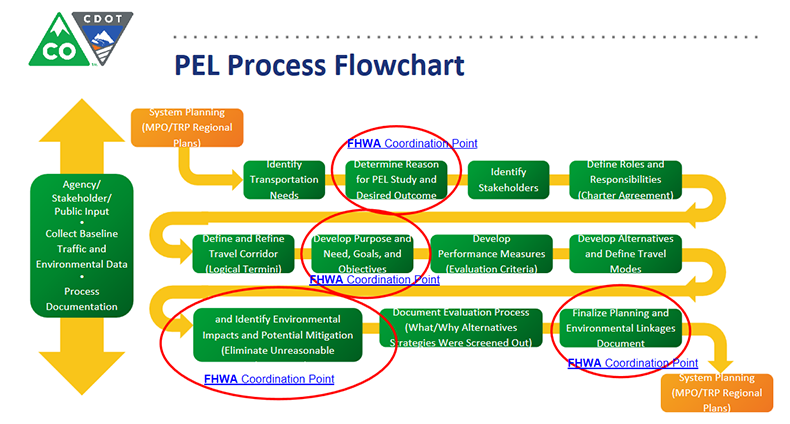
Figure 3: CDOT PEL Process Flowchart
Resources
Colorado PEL resources include:
Question and Answer
Q: Where does the 5-year maximum for the planning product come from?
A: Per section 23 USC 168(d)(10), the planning product must be approved within the 5-year period ending on the date on which the information is adopted or incorporated by reference. Some of the other PEL authorities provide more flexibility so you should decide if the project would be ready in that amount of time. If the project will not be, you can still use planning products to help with the NEPA process.
Pennsylvania Overview of PEL Approaches
The Pennsylvania Department of Transportation (PennDOT) uses their PennDOT Connects program to advance transportation projects through the planning and project delivery process. PennDOT Connects is a collaborative process between planning partners that identifies needs and includes municipal collaboration early in the planning process. Municipal collaboration is required on all projects and includes contextual information such as bicycle and pedestrian needs, transit, congestion, safety concerns, and stormwater management. The information collected is used to better inform and screen pre- and post- Transportation Improvement Program (TIP) projects. Information is collected through PennDOT’s screening form, which is a tool accessible on their website. The PennDOT Connect’s screening process helps to develop better scopes, cost estimates, and schedules before a project is programmed. It also helps to build community relationships early in the planning and project delivery process. To increase communication and collaboration, PennDOT District 9 has identified areas of opportunity for planning and engineering collaboration (Figure 4) and offers a tailored version of the statewide Planning and Engineering 360 Training.
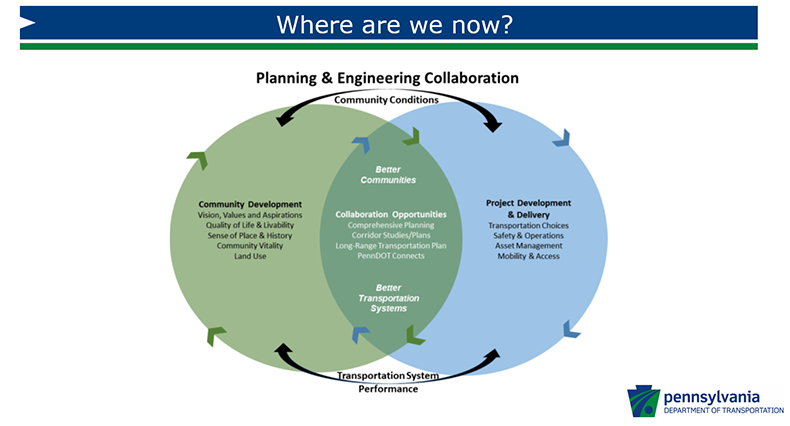
Figure 4: Planning & Engineering Collaboration
The Southwestern Pennsylvania Commission (SPC), the region’s MPO and Local Development District (LDD), provided information on the work SPC completes for the 10-county area surrounding Pittsburgh, PA. SPC advances environmental considerations early in the planning process through developing candidate project information, and collaborating to assist pre-TIP LPN elements.
SPC has integrated PEL at each level of their project planning. This integration is displayed in their Levels of Transportation Planning and Environmental Integration tiers (Figure 5).
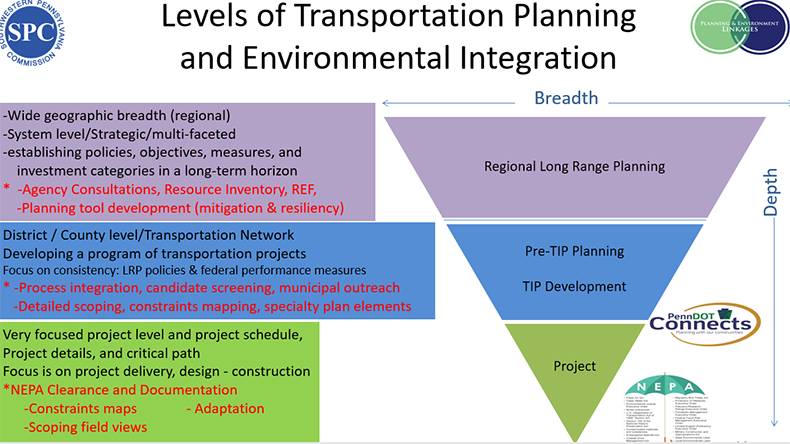
Figure 5: SPC Levels of Transportation Planning and Environmental Integration
To better integrate PEL activities, SPC developed a Regional Ecosystem Framework (REF) GIS model that quantitatively identifies concentrations of sensitive natural resources. This analysis tool is used by SPC and member planning entities to assess the environmental resources involvement in future infrastructure projects. The REF application is utilized in the following ways:
- LRTP PEL Appendix and project scores
- Pre-TIP planning and screening of candidate projects
- Constraints mapping for corridor studies
- Assistance to counties preparing Comp plans
- Future planning and mitigation activities
As part of their 2019 Long Range Transportation Plan, SPC developed a PEL Appendix to summarize the required environmental agency consultation, project environmental screening, and mitigation measure discussion. This included an extensive online web application that contains resource inventory mapping, agency consultation milestones, integrated transportation/environmental maps, project screening results, mitigation measures, and resiliency mapping.16
Resources
Question and Answer
Q: How are you involving the public in this process?
A: The public is invited to meetings on a case-by-case basis early in the PennDOT Connects process.
North Carolina Overview of PEL Approaches
The North Carolina Department of Transportation (NCDOT) applies PEL through its Integration initiative. Integration in North Carolina is a planning process that provides a seamless connection between long-range transportation planning and project development. NCDOT uses the term “Integration” instead of PEL, but the terms are more or less synonymous. At its core, Integration is about linking land use planning and a community’s vision with long-range transportation planning and NEPA project planning to deliver projects in a timely manner that align with a community’s needs and vision.
NCDOT began Integration in 2005 and held a series of multidisciplinary workshops and outreach efforts to map the project development and planning processes and identify “linkages.” Teams were established and tasked with identifying challenges and opportunities between Comprehensive Transportation Plans (CTPs) and the project development process and developing best practices that can be used during the Integration process. Figure 6 illustrates the outcome of the workshops and displays where the linkage between long-range transportation planning and project delivery exists.
Integration Linkages
| Long Range Transportation Planning |
|
Project Development |
| Problem Statement |
→ |
Purpose & Need |
| Planning Level Alternatives Analysis |
→ |
Detailed Alternatives Analysis |
| Community Impact Statement |
→ |
Community Impact Analysis |
| Indirect & Cumulative Effects Screening |
→ |
Indirect & Cumulative Effects Analysis |
| Public Involvement |
→ |
Public Involvement |
Figure 6: NCDOT Integration Linkages
These linkages are central to achieving the connection between long-range transportation planning and project development in North Carolina. Specifically:
- The problem statement from the long-range transportation planning process informs the purpose and need for project development. This linkage clearly enumerates why a project is being undertaken and how it fits more broadly into the overall transportation planning landscape.
- A high-level alternatives analysis undertaken in long-range transportation planning connects with the detailed alternatives analysis that is conducted at the project level by narrowing the possible alternatives to reasonable options for further evaluation.
- A broad community impact assessment leads into a community impact analysis at the project level by establishing key concerns and focus areas where detailed analysis is necessary for project development.
- The effects screening provides a broad outline that informs the effects analysis at the project level, where more detailed analysis is carried out.
- Public involvement conducted at the long-range transportation planning level provides early input that can shape the project development process and inform how additional public involvement should be carried out.
NCDOT and the NC FHWA Division Office provided information on an upcoming Linkages, Advancing Transportation through Linkages, Automation, and Screening (ATLAS)19 project which will streamline project development using GIS tools, applications, and data. ATLAS objectives are: regional evaluation using GIS; early screening; inform scope, schedule, and budget; automated reporting, and; one stop shop for project data. Phase 1 of ATLAS is scheduled to roll out Spring 2019.
Resources
Question and Answer
Q: Does North Carolina have tools related to community engagement and impacts?
A: Yes. One tool that is helpful is the Community Understanding Report23, which is a template for gathering and assessing data about a community in order to support a transportation planning effort, either development of a CTP or Metropolitan Transportation Plan (MTP). The information developed in these categories are useful in the long range planning process and also project development when they are shared.
Florida Overview of PEL Approaches
Overview
Florida Department of Transportation (FDOT) provided information on their PEL-like process, Efficient Transportation Decision Making (ETDM). ETDM is FDOT’s procedure for incorporating environmental considerations early in transportation planning to better inform project delivery. During ETDM, FDOT identifies potential environmental impacts and asks for input from agencies and the public. The process helps to:
- Determine the feasibility of proposed projects.
- Allow for early identification of potential avoidance, and minimization and mitigation opportunities.
- Focus the issues to be addressed during Project Development and Environment (PD&E).
- Create information and documentation which may be advanced into the PD&E phase.
- Provide appropriate issue resolution mechanisms during planning.
To facilitate intergovernmental interactions, each of the seven geographic FDOT Districts has an Environmental Technical Advisory Team (ETAT). ETAT members and the public have the opportunity to provide input to the FDOT regarding a project’s potential effects on the natural, physical, cultural, and community resources throughout the Planning phase of project delivery.
Figure 7 displays how the ETDM process is composed of two project-screening events: Planning and Programming. During the Planning Screen, comments received from the ETAT members and the public help FDOT and MPOs/TPOs to identify environmental considerations that assist in assessing projects for inclusion or advancement in Long Range Transportation Plans (LRTPs). During the Programming Screen, qualifying projects are reviewed when being considered for funding in the FDOT Five-Year Work Program or MPO TIP, or if already funded, before advancing to the PD&E phase.
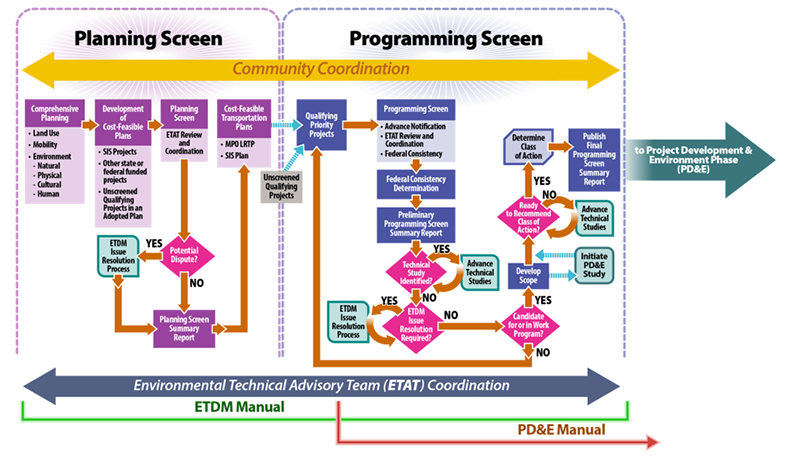
Figure 7: FDOT Transportation Project Development Process
Coordination with the ETAT members is facilitated through the Environmental Screening Tool (EST)24 (Figure 8), an Internet-accessible interactive database and mapping application. The EST brings together resource and project data from multiple sources into one consistent format. It provides quick, standardized Geographic Information System (GIS) analyses, identifying potential natural, physical, cultural, and community resources present in the project area. The EST also allows the ETAT members the opportunity to provide input on proposed projects.
FDOT has formalized the ETDM process through state and federal resource agency agreements, training programs, and policies and procedures.
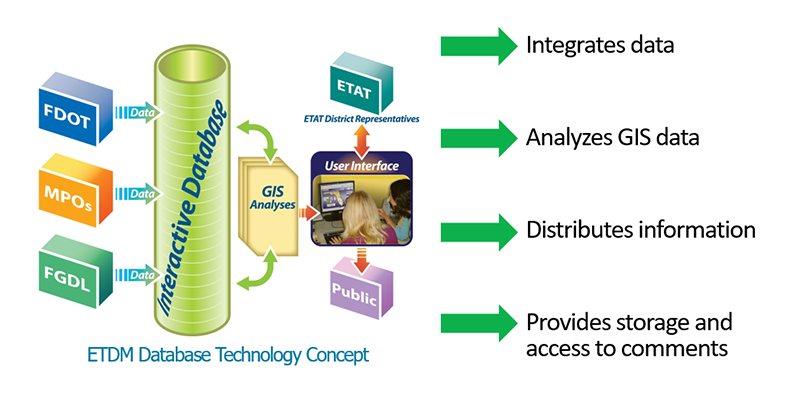
Figure 8: EST Concept
Resources
Question and Answer
Q: How long does the process take?
A: It depends of the type of project. Florida has tracked some of the information in progress reports. Those progress reports would provide more information on how long and what the benefits were. The progress report can be found at the following link: https://www.fdot.gov/environment/pubs/etdm/etdmmanual.shtm.
Washington Overview of PEL Approaches
Overview
Washington State Department of Transportation (WSDOT) considers environmental, community, and economic goals early in the transportation planning process. Environmental staff work with planners to define environmental baseline and contextual needs and to document the information, analysis, and products developed during planning studies to inform the environmental review process.
WSDOT has embraced a Practical Solutions approach to planning and project delivery. Practical Solutions require increased engagement and collaboration with partners and communities in order to understand current and future transportation needs. To develop Practical Solutions, the agency identifies strategies and develops potential solutions to address the needs/performance gaps. WSDOT discussed the areas within the process that they have targeted to determine if there are any opportunities or inefficiencies (Figure 9).
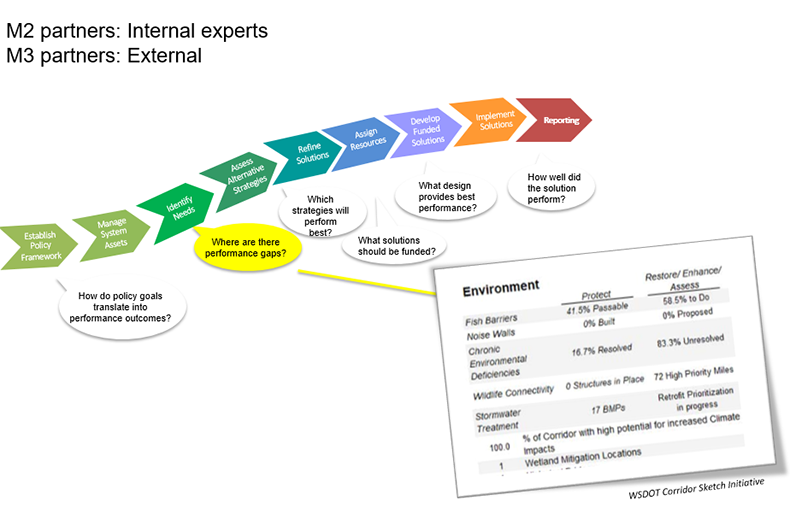
Figure 9: WSDOT Planning Opportunities
Also shown in Figure 9 is WSDOT’s Corridor Sketch Initiative (CSI). The CSI serves as a tool to document environmental data to identify performance gaps, potential partnership opportunities, and provide context for community engagement opportunities at the beginning of the planning process. During Corridor Planning, environmental staff can help incorporate CSI environmental priorities into the early phases of a planning study. Environmental members of the planning team help determine whether the environmental needs are context for transportation planning efforts, or if fixing a gap in environmental performance rises to the level of a baseline need. CSI Environmental data includes:
- Climate Vulnerability Impacts
- Chronic Environmental Deficiencies
- Fish Passage Barriers
- Habitat Connectivity Priorities
- Noise Reduction
- Stormwater Retrofit & BMP Priorities
- Wetland Mitigation Sites
- Historic Bridges
WSDOT is currently piloting four PEL studies. Through these pilots, WSDOT has been able to determine that a bridge does not need replacement and during a pre-Biological Assessment (BA) meeting, WSDOT determined that there are not fatal flaws for environmental consideration. These findings will help accelerate project delivery.
Resources
Question and Answer
Q: Why do you hold a pre-BA meeting?
A: Due to endangered salmon and sturgeon populations, WSDOT has engaged stakeholders such as U.S. Fish and Wildlife early in the process for that matter.
Peer Presentation Discussion
Following presentations by the peers, Rod Vaughn, from FHWA Resource Center, facilitated a discussion session during which attendees discussed the following topics:
GIS Data Layers
Participants reported that they source GIS data layers from a number of sources, including resource agencies, public or government resources, and universities, among others, States noted it is best practice to implement data management policies when working with GIS data layers from several sources.
PEL Approach
There was discussion amongst participants regarding how their States use PEL approaches. Some States, like Colorado, reported that they focus the PEL process on corridor studies that are generally 10-15 miles and use PEL to vision corridors with locals for Long Range Planning (LRP). Other States, like Florida and North Carolina, reported that PEL is integrated into their process and is used to provide them comprehensive information early on, allowing for better decision-making. Pennsylvania noted that only a few districts are using the PEL approach; it is not currently used statewide. In District 9, PennDOT rarely has an EIS; they primarily use PEL to minimize impacts early on.
How are MPOs involved?
Depending on the size and sophistication of the MPOs in the area, States agreed that they generally work with the MPOs to complete good, comprehensive planning studies during PEL; however, they are still setting the standard.
Hugh Conroy from Whatcom Council of Government (WCOG) noted that his organization is limited in size compared to some other MPOs, but he is generally involved in the coordination, modeling, data collection, and other support roles during a project.
Terminology
As there are linkages between the planning and environmental review processes, participants noted that it would be helpful to define PEL-related terminology, as there is some confusion in the field with terms being used interchangeably.
Benefits of PEL
Participants identified several benefits of PEL including:
- Ability to envision with limited funds
- Consider resources earlier in the planning process
- A robust PEL-like system in Florida is the only way the transition to NEPA assignment was smooth for FDOT
- North Carolina has seen several time and cost benefits from integration and is interested in applying PEL studies to EIS projects
Challenges
- High staff turnover makes it challenging to have expertise on completed PEL studies
- Receiving buy-in from staff and stakeholders. Education and training is necessary.
- Early public engagement
Day 2: Adopting PEL Approaches to IDOT Processes and Projects
Group Discussion 1
Colorado provided an example of how they have used PEL when a political official or legislator says that a solution is needed.
Chuck Attardo, CDOT South Corridor Manager, provided background information on the North I-25 PEL Study. The 34-mile section of I-25 between US 36 and CO 7 is one of the most congested stretches of interstate in the Denver metro area. Due to safety concerns and congestion, the project was politically driven. CDOT conducted a PEL study to identify trouble spots and a range of improvement alternatives to reduce congestion and improve safety. The PEL study focused on an 18-mile region called “the gap.” The timeline of the project was expedited, causing the PEL study to be put on hold; however, high levels of public and political involvement for a long-term vision for the area pushed the PEL study to completion. Best practices identified from the North I-25 PEL Study include:
- Identified short-term improvements that were compatible with (and did not preclude) already-approved long-term improvements from the North I-25 EIS.
- Provided a consistent message that short-term solutions were inadequate to fully address transportation needs, and the long-term solution required the EIS Preferred Alternative. This message helped manage expectations about what the study could accomplish through short-term recommendations.
- Engaged FHWA in setting the study’s goals, methodology, and terminology.
Question and Answer
Q: Were regional partners involved? Did you see benefits from working with them early on?
A: Yes, regional partners such as DRCOG and Regional Transportation District (RTD) provided critical input to CDOT throughout the study and at key milestones for recommendations.
Following the project background for North I-25 PEL, attendees participated in an open discussion. Topics discussed included:
Cost-Benefit Analysis
ETDM has been the process in Florida for over 10 years. FDOT completed cost-benefit analysis reports in the past, but have since stopped as it is now business as usual. FDOT has committed to consistent communication from a variety of outlets that includes webinars and trainings, and fast response times to continue their success.
Traffic Studies
Participants discussed including traffic studies in a PEL study. Traffic studies are challenging because there is the risk that they will need to be redone in NEPA. States agreed that it is best to refine the purpose and need so that alternatives can be identified instead of completing a full traffic study. Additionally, existing resources and tools can help fill in the gap of a full traffic study. For example, North Carolina is using the Regional Integrated Transportation Information System (RITIS)30 to identify traffic levels and use that information during project planning instead of completing a full traffic study during project planning. This system is not one-size-fits-all, but can work for certain projects. Participants identified additional resources including Streetlight Data31 to assist with traffic data collection.
Group Discussion 2
Mr. Vaughn facilitated an open discussion during which participants discussed the following topics:
Liaisons
Participants discussed the benefits of having liaison positions to create better communication and efficiency. States ranged from having 1-2 liaison positions to 34.75 liaison positions in Florida. FDOT funds 26.75 of those liaison positions; the remainder are funded by partner agencies.
Purpose and Need
Participants discussed crafting the purpose and need statement for PEL and how the purpose and need statement transitions to NEPA. Some States reported developing a narrow purpose and need statement while others tend to develop slightly more broad statements. Regardless of the type of purpose and need statement, participants agreed it is important to watch for “scope creep” or projects increasing in scope over time. Colorado noted if the purpose and need statement changes in the transition from PEL to NEPA, they go back to the PEL and identify what could have gone differently through a process they call NEPA 360. NEPA 360 is a good way to examine the benefits and challenges of the both the NEPA and PEL process, and what they can leverage in the future.
Next Steps
States provided information on next steps for their PEL program. Next steps for each state include:
Colorado: CDOT’s PEL program will continue to be a valued asset for weaving planning and NEPA together. CDOT will incorporate some of the process improvements and creative implementations of PEL shared at the PEL Peer Exchange into our program. This year we will conduct several trainings for our environmental, planning, and engineering staff, as well as refine practitioner tools used by CDOT, local municipalities, and the consulting community.
Pennsylvania: PennDOT and SPC are working together to advance the program through linking PennDOT Connects information into the Scoping Document/CE Expert System, establishing the mobile PennDOT Connects iPad app, continuing to educate non-planners on planning process and analysis, continuing to champion successes, exploring ways to expand involvement of resource agencies, and expanding success of PennDOT Connects to construction and maintenance phases.
North Carolina: North Carolina is working towards the following process enhancements: 1) Establish project scoping reports as primary PEL Project Planning, including increased coordination with resource agencies; 2) Improve documentation of NEPA information in systems planning, including public involvement and environmental documentation (e.g., community understanding reports and indirect and cumulative effects screening); 3) Refine urban area systems planning (metropolitan transportation plans) to strengthen the PEL-related elements of Metropolitan Transportation Planning activities to allow projects submitted for project prioritization to have improved PEL decision documents; and, 4) Fund additional PEL planning studies.
Florida: The Florida team is working together within environmental and planning offices on guidance to better capture PEL products, analysis and decisions, as well as requirements and constraints to ensure reuse of earlier efforts. Additionally, liaison agreements are being refined to include PEL activities and expectations.
Washington: WSDOT will debrief executive management on PEL peer exchange and discuss next steps for PEL work, including finalizing the draft PEL guidebook and incorporating lessons learned from the four PEL pilots. WSDOT will continue to promote the evaluation of environmental assets (i.e. stormwater retrofits, wetland mitigation sites, habitat connectivity priorities) in planning studies using GIS data. Continue to integrate PEL in to WSDOT process and look for new, formal PEL opportunities.
Closing Remarks
Mr. Brewer and Ms. Sergeson thanked everyone and expressed interest in continuing the discussion amongst States conducting PEL and PEL-like activities.
Appendix A. Agenda
| DAY 1 – Wednesday, April 3, 2019 |
|
Location:
Colorado Department of Transportation
2829 W. Howard Place
Room 158 - West Auditorium
Denver, CO 80204
|
Google Hangout:
Day 1
meet.google.com/fjp-oxpo-fba
+1 929-399-5914
PIN: 211 242#
|
| Time |
Session - Orientation and Introduction to Content |
| 8:30 - 8:45 am |
Opening Remarks
- John Cater, FHWA Colorado Division Administrator
- David Singer, CDOT Environmental Policy and Biological Resources Section Manager
|
| 8:45 - 9:00 am |
Introductions
- Rod Vaughn, FHWA Facilitator
|
| FHWA PEL Overview |
| 9:00 - 9:30 am |
Defining PEL
- FHWA will provide an overview of the legislative basis for PEL and review primary examples of planning products (analyses and decisions)
- Tricia Sergeson, FHWA Colorado Division PEL Program Manager
|
| 9:30 - 9:45 am |
FHWA Q&A |
| Peer Overview |
| 9:45 - 10:15 am |
CDOT Overview of PEL Approaches
- Sean Brewer, CDOT PEL Program Manager and NEPA Specialist
- Tricia Sergeson, FHWA Colorado Division PEL Program Manager
|
| 10:15 - 10:30 am |
CDOT Q&A |
| 10:30 - 11:00 am |
PennDOT Overview of PEL Approaches
- Anne Stitch, District Planner, PennDOT District 9-0
- Ryan Gordon, Transportation Program Development Manager, Southwestern Pennsylvania Commission
|
| 11:00 - 11:15 am |
PennDOT Q&A |
| 11:15 - 11:45 am |
NCDOT Overview of PEL Approaches
- Alena Cook, Staff Engineer, NCDOT Transportation Planning Division
- Jennifer Martin, PE, Corridor Development Engineer, Division of Planning and Programming, NCDOT
- Derrick Weaver, PE, Unit Head, Environmental Policy Unit, NCDOT
|
| 11:45 am - 12:00 pm |
NCDOT Q&A |
| 12:00 - 1:00 pm |
Lunch |
| 1:00 - 1:30 pm |
FDOT Overview of PEL Approaches
- Jason Watts, Director, FDOT Office of Environmental Management
- Pete McGilvray, FDOT State Environmental Quality and Performance Administrator
|
| 1:30 - 1:45 pm |
FDOT Q&A |
| 1:45 - 2:15 pm |
WSDOT Overview of PEL Approaches
- Ashley Carle, Environmental Procedures Coordinator, WSDOT Environmental Services Office
- Theresa Turpin, Multimodal Development Manager, WSDOT Olympic Region
|
| 2:15 - 2:30 pm |
WSDOT Q&A |
| 2:30 - 3:30 pm |
Peer and Participants Q&A
- Rod Vaughn, FHWA Facilitator
- Sean Brewer, CDOT PEL Program Manager and NEPA Specialist
|
| 3:30 - 4:15 pm |
Participant Dialogue: Framing the Discussion on PEL Benefits and Challenges, and Roles and Responsibilities
Facilitated discussion to dig deeper into the materials presented by State DOTs and FHWA Headquarters.
- Rod Vaughn, FHWA Facilitator
|
| 4:15 - 4:30 pm |
Preview of Day 2
- Rod Vaughn, FHWA Facilitator
|
| DAY 2 – Thursday, April 4, 2019 |
|
Location:
Colorado Department of Transportation
2829 W. Howard Place
Room 158 - West Auditorium
Denver, CO 80204
|
Google Hangout:
Day 1
meet.google.com/ggq-qjwe-kxd
+1 573-987-0032
Pin: 313 456#
|
| Time |
Session - Adopting PEL Approaches to Processes and Projects |
| 8:30 - 9:00 am |
Introductions and Day 1 Review
- Rod Vaughn, FHWA Facilitator
|
| Breakout Session |
| 9:00 - 10:00 am |
Group Discussion
In a large group discussion, discuss project use of PEL. What are the challenges to successfully completing a PEL? What are the challenges transitioning a project into NEPA from PEL? How does PEL work with the TIP and STIP?
- Sean Brewer, CDOT PEL Program Manager and NEPA Specialist
- Rod Vaughn, FHWA Facilitator
- I-25 South PEL Project Manager
- WestConnect PEL Project Manager
|
| 10:00 - 10:15 am |
Break |
| 10:15 - 11:15 am |
Group Discussion
In a large group discussion, discuss program development of PEL. What are the challenges to standing up a PEL Program? What are some tools that a program can provide to projects?
- Sean Brewer, CDOT PEL Program Manager and NEPA Specialist
- Rod Vaughn, FHWA Facilitator
|
| 11:15 - 11:30 am |
Conclusion from Large Group Discussion
As a large group, highlight the importation thoughts and action items.
- Rod Vaughn, FHWA Facilitator
|
| 11:30 - 11:45 am |
Next Steps
- Sean Brewer, CDOT PEL Program Manager and NEPA Specialist
- Rod Vaughn, FHWA Facilitator
|
| Closing Remarks |
| 11:45 - 12:00 pm |
Closing Remarks
- Sean Brewer, CDOT PEL Program Manager and NEPA Specialist
|
Appendix B. Participant List
In Person
| First |
Last |
Organization |
| Theresa |
Turpin |
Washington DOT |
| Hugh |
Conroy |
Whatcom Council of Governments |
| Sharon |
Love |
Washington FHWA Division Office |
| Derrick |
Weaver |
North Carolina DOT |
| Jennifer |
Martin |
North Carolina DOT |
| Donnie |
Brew |
North Carolina FHWA Division Office |
| Jason |
Watts |
Florida DOT |
| Peter |
McGilvray |
Florida DOT |
| Dana |
Reiding |
Florida DOT |
| Anne |
Stich |
Pennsylvania DOT |
| Deborah |
Suciu Smith |
Pennsylvania FHWA Division Office |
| Madison |
Burke |
US DOT Volpe Center |
| Sean |
Brew |
Colorado DOT |
| Brian |
Fauver |
Colorado DOT |
| Jessica |
Myklebust |
Colorado DOT |
| Jordan |
Rudel |
Colorado DOT |
| Vanessa |
Henderson |
Colorado DOT |
| Chuck |
Attardo |
Colorado DOT |
| David |
Singer |
Colorado DOT |
| Vanessa |
Santistevan |
Colorado DOT |
| Ben |
Davis |
Colorado DOT |
| Tim |
Kirby |
Colorado DOT |
| Danny |
Hermann |
Colorado DOT |
| Jim |
Eussen |
Colorado DOT |
| Tricia |
Sergeson |
Colorado FHWA Division Office |
| Rod |
Vaughn |
FHWA Resource Center |
Google Hangout
| First |
Last |
Organization |
| Jody |
McCullough |
FHWA HQ |
| Marisel |
Lopez-Cruz |
FHWA HQ |
| Cheng |
Yan |
FHWA HQ |
| Lana |
Lau |
FHWA HQ |
| Representatives |
Representatives |
GDOT |
| Alena |
Cook |
North Carolina DOT |
| Ryan |
Gordon |
Southwestern Pennsylvania Commission |
Footnotes

